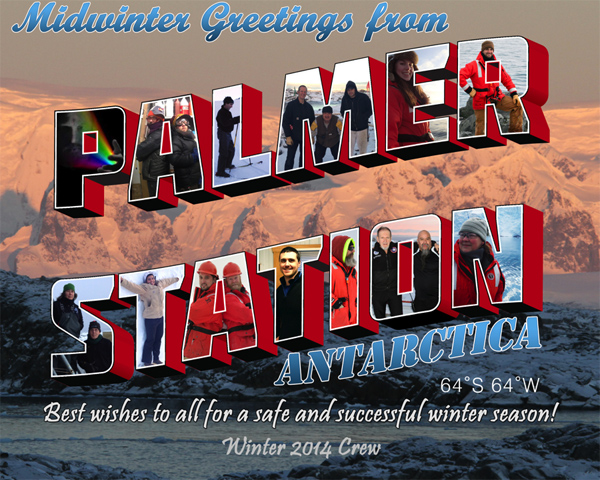Antarctic Co-op: The Not So Sunny Side of Things

This is a guest blog post by Eileen Sheehan, a biochemistry student at Northeastern University who is on co-op at Palmer Station, Antarctica. She will providing a series of guest blog posts about her co-op experience.
When people think about Antarctica, they often have thoughts of a cold, white, and barren place. The amount of daylight we receive down here due to our latitude is usually not one of the first things people think about. Before I left home, a lot of my friends and family members were shocked to hear that on the shortest day of the year (June 21st – midwinter’s day), we’d only have about two or three hours of daylight at Palmer. At other Antarctic stations, they may not even see the sun that day.
The lack of daylight during working hours does affect what we do on a day-to-day basis. It’s difficult trying to look into the outdoor fish tanks when you don’t have the sun around helping you spot your fish. Flashlights can only do so much. It’s also harder to go out and fill a Dewar with liquid nitrogen or to go and dump our hazardous waste into the metal drums provided by the waste department. For those of us here not working in science, it makes their work on the boat ramp and fuel lines trickier. Headlamps become a necessity.
Aside from some inconveniences in our daily work schedule, it limits what we can do recreationally. Without daylight we cannot go boating in the zodiacs. This means that we’re trapped on our section of Anvers Island all day and night. We can still go to the “backyard” and to the Marr Ice Piedmont (the glacier behind us), but it’s ill advised to do so when you have nothing guiding your footsteps. It can get rocky and slippery back there, and without the sun it becomes harder to distinguish a rock from a fur seal.
Since we’ve now passed midwinter’s day, we’re quickly gaining sunlight. We’re seeing an additional five or so minutes each day. Just this week the sun started to rise near 9 A.M. and set near 3 P.M. For comparison, on midwinter’s day the sun rose close to 11 A.M. and set around 2 or 2:30 P.M. With more light comes more opportunities to go outside and visit the nearby islands. I look forward to being able to see the different seals and penguins again as we approach the summer season in the coming months.




